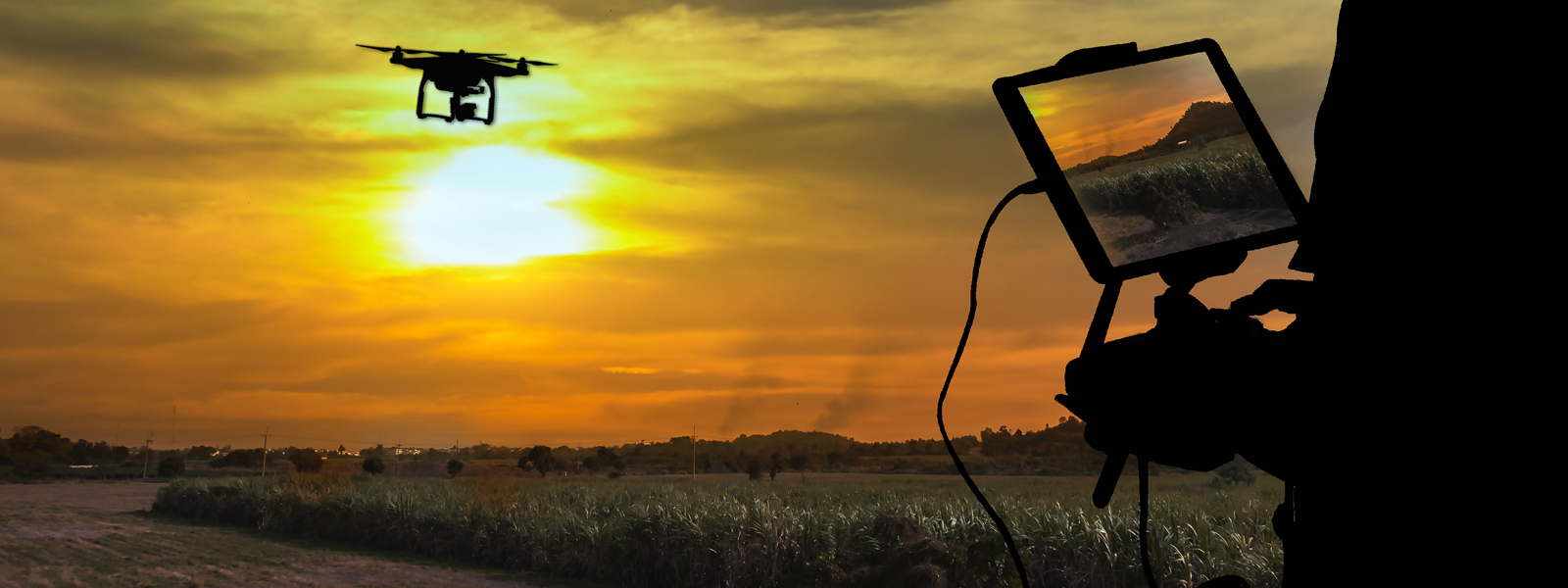
Commercial Drone Use in the Crop Health Industry
On August 29th, 2016, the Federal Aviation Administration (FAA) put into effect new rules regarding unmanned aircraft systems (UAS), or drones, which the agriculture and crop health industries have warmly embraced. The Small UAS Rule (Part 107) means that it’s now less prohibitive and expensive for farmers to operate drones on their land. The devices give farmers a new and efficient way to monitor the health of their fields and crops – and even offer a chance for them to make a positive impact on the environment. But the new regulations won’t just boost the agriculture industry; it’s estimated that in the first ten years the rules are in place, drones will produce roughly $82 billion in economic growth.
What Do the Rules Entail?
The new rules come with a number of perks and a few minor hindrances for farmers:
No pilot’s license is needed
Now, a drone user must pass an Aeronautical Knowledge Test, comparable to a driver’s license test, and then obtain a remote pilot airman certificate. However, the rules eliminate the original Section 333 waiver that mandated a user to have a second observer on-hand in order to legally operate an unmanned drone.
New weight restrictions
Without a waiver, drones must weigh under 55 pounds. Fortunately, these smaller drones can do most of the remote sensing jobs on farms, carrying cameras, doing plant counts and measuring the health of the current vegetation.
Still no crowds
Absent a special waiver, the new rules do not permit the flying of drones over crowds. Because farms don’t typically have large groups of people gathering, this largely does not affect agricultural drone users.
More jobs
Prior to the new law, people could not operate drones or charge for their services on farms without a 333 exception from the FAA. With that exception in place, anyone over the age of 16 with a remote pilot certificate and a small UAS rating is able to operate a drone, greatly increasing the potential job pool. Furthermore, an agriculture consultant can add "operation of drones" to their list of services.
Keep the drone in sight
As with previous rules, drones must remain in the user’s line of vision, at a maximum height of 400 feet. While that could initially sound restrictive, these parameters should allow operators to capture an entire field in just one flight. A user is not permitted to rely on a ground display as a line of sight; a user must be able to see the actual drone at all times, and flights must be conducted in daylight.
One drone, one operator
One restriction that farmers may not love is that a single operator is not permitted to operate more than one drone at a time. However, waivers may be obtained under certain circumstances.
Why Use a Drone?
One of the many perks of drone use is the incredible amount of time it saves. Rather than manually scouting crops, farmers using drones gain immediate knowledge about the status of their fields, minimizing response time to any issues. Crop spraying and monitoring become simpler and more efficient.
Drones also have the capability to take high-resolution images, allowing growers to easily assess the health of their fields. They can spot bacterial and fungal diseases and pest infestations so they can address any issues quickly to save the crops, along with managing nitrogen and herbicide inputs. Additionally, recording footage of damage from disease, insects or weather can assist in highlighting the extent of losses for insurance claims.
Sensors on the drones can detect water management systems, letting growers quickly analyze a field’s moisture. They can locate cooler and well-watered areas and hot, dry spots – a feature that is especially useful in drought-prone regions. The sensors can also identify erosions and nutrients in the soil and collect plant height measurements.
Yet another benefit of using a UAS is mapping. Drones create images of field borders and crop fields, along with three-dimensional maps for early soil analysis. Mapping is incredibly helpful in counting crops.
One of the most critical upsides to using agricultural drones is the ROI. Drones reduce operating costs and increase crop yield by providing critical, timely information for management intervention. They also help address a major concern of farmers: fertilizer data collection. Because fertilizer represents up to 50 percent of input costs, it’s essential that growers use precisely the amount their plants need – no more, no less – for the sake of the environment . . . and their wallets. Drone sensors measure phosphorous and nitrogen levels on the surface to measure fertilizer needs and excesses in the field.
What Does This Mean for the Industry?
Far surpassing satellite imaging in resolution, convenience and overall quality, drones and the FAA’s approval of their commercial use are letting farmers more easily monitor their livelihood and capture all necessary details for sustaining a thriving crop. By monitoring development and any changes in crop health using drones, growers can act much more quickly, and they can retain the footage for future problem solving. Drones are crucial to crop health in precision agriculture and farming. The new regulations bring forth an array of benefits that will ensure the health and safety of the world’s food supply, as well as allowing the agriculture sector to evolve technologically.